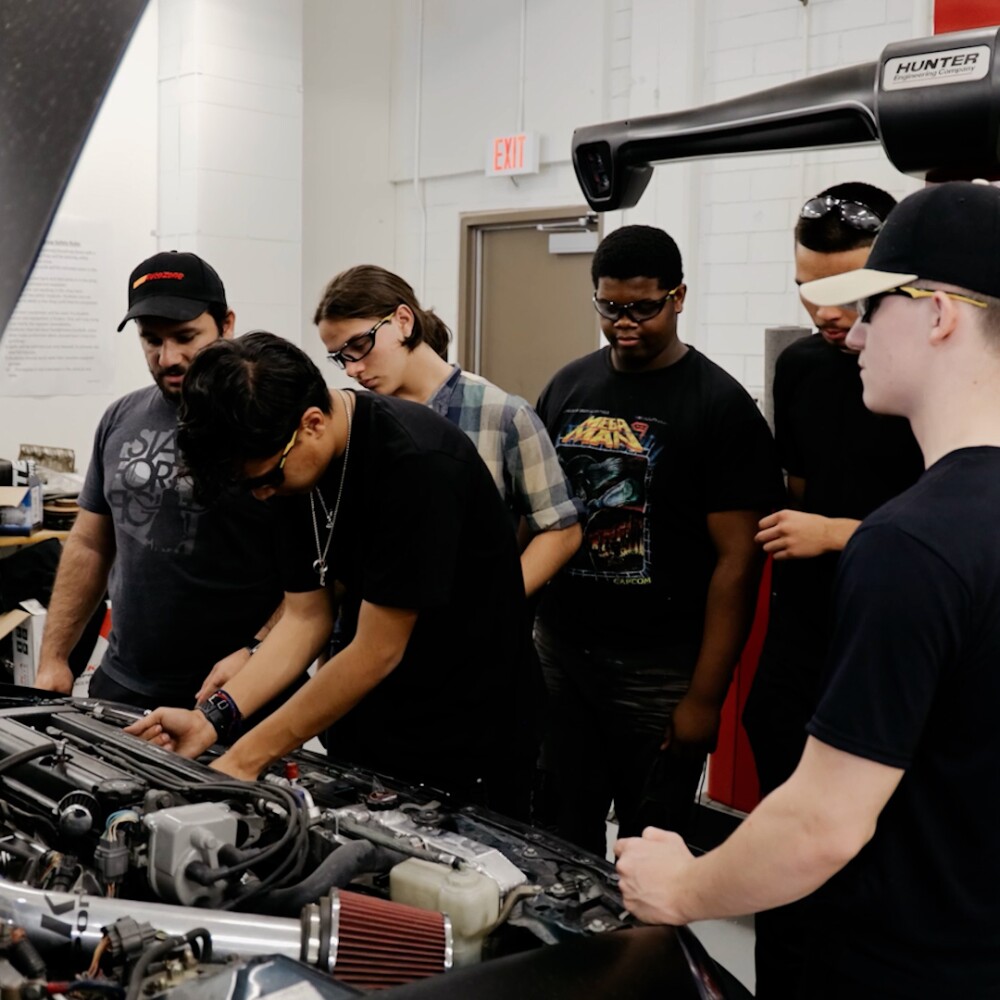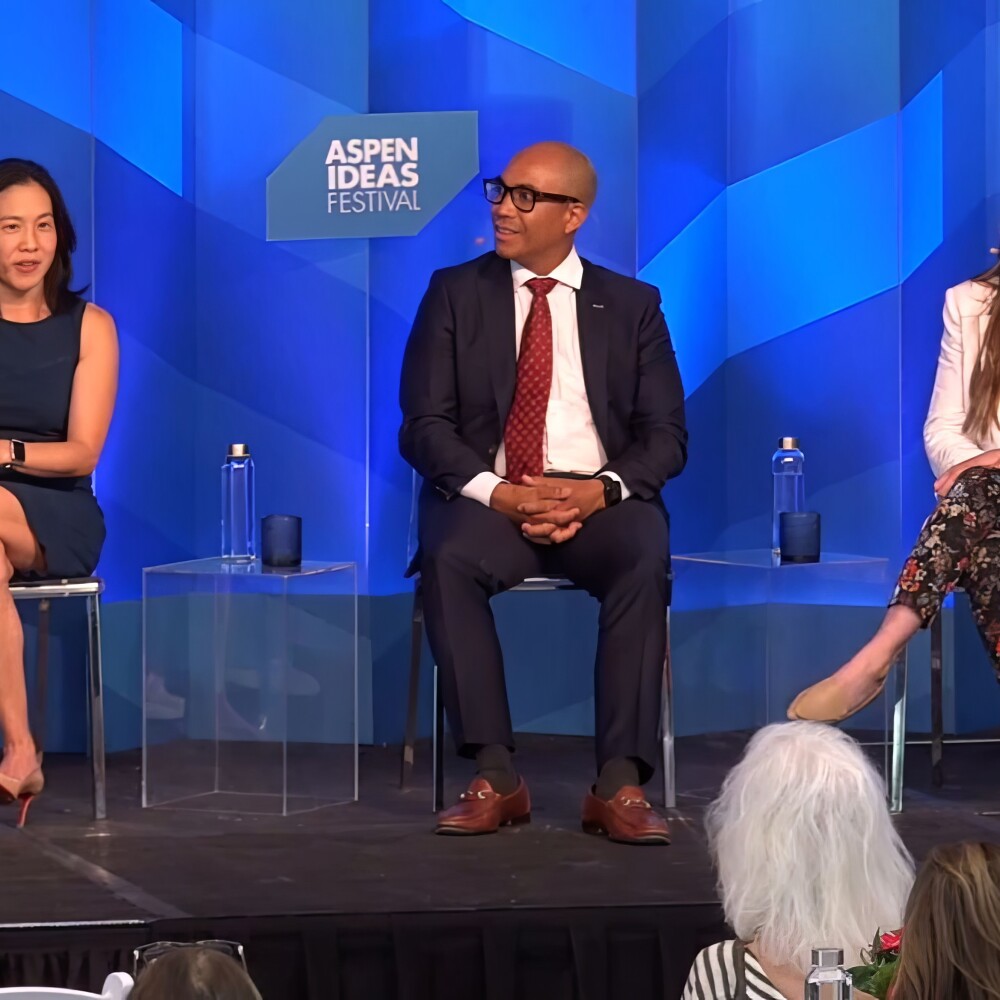When Rainer Shooter discusses the Menominee Tribal Enterprises lumber mill, his sense of pride is palpable.
Owned by the Menominee Tribal Nation in northeast Wisconsin, the mill has been in operation for more than 150 years, processing the lumber from 224,000 acres of Tribally Forested land.
“The Menominee were one of the few tribes that said, “No. We aren’t moving. We aren’t relocating. We are going to stay. Today, we are able to care for the forest that our ancestors once cared for. It’s very special.”
But the mill, alongside a number of other local businesses that rely on tradesmen, is facing an existential crisis.
“There was a time when the mill was called the heartbeat of the reservation. It sustained the tribe and provided employment for hundreds of people,” says Rainer, who currently serves as the mill’s chief operating officer.
Today, the younger generations are losing interest in trade professions – like millwork and construction – in favor of other job opportunities.
“We are lucky that we have a core group of people here dedicated to fulfilling the important work for this community right now. But people don’t last forever. Finding younger folks to learn what our current employees know is our biggest issue.”
Now, a new partnership between the Bowler School District, College of Menominee Nation and local businesses is helping students from the Menominee, Stockbridge-Munsee and Ho-Chunk nations learn, train and gain certification in the construction trades.
Led by the National Indian Education Association, the partnership is also supported by Core Learning Exchange, which provides online career pathways curriculum. The program is filling critical gaps in the local workforce and helping the next generation stay and earn a living wage in the place they call home.
It’s also a winner of the Catalyze Challenge. Supported by the Walton Family Foundation, the challenge has awarded $10 million in grant funding to 40 organizations working to plan, pilot and implement solutions that provide students with career-connected learning opportunities and pathways into fulfilling careers.
Actively listening to the communities we serve through initiatives like the Catalyze Challenge drives the foundation’s work. By learning from their lived experiences, we can help grantees lead solutions to the most urgent challenges of today.
Dr. Casie Wise is the senior program director for the National Indian Education Association. NIEA has historically focused on issues of education sovereignty.
But following the pandemic, she says the organization listened closely to their communities on what was needed most. Their answer? Beyond educators and additional school funding, they needed pathways to careers.
“We're struggling. We're combating trauma. But we want to also remember that there are so many resources that these communities can rely on. One of the greatest resources we have is our kids. We just need to help them see that for themselves,” she says.
.
Glenda Butterfield-Boldig is Superintendent of the Bowler School District. Fifty percent of her student population comes from the surrounding tribal communities. Seventy percent qualify as low-income. She says that many of her students don’t feel like there is a place for them in institutions of education.
“Our kids can’t dream about things if they don’t know what to dream about. Programs like this give us the opportunity to show them that they belong.”
Starting in middle school, students in this rural community now have access to an extensive catalog of online coursework from Core Learning Exchange, each centered on potential careers. Virtual reality headsets help them imagine what each career looks and feels like.
“We’ve had kids climb a virtual ladder and realize, ‘Hey, I think I’m afraid of heights.’ Every experience we give them is meaningful,” says Glenda.
The grant has also enabled the school to purchase a mobile construction lab, fully outfitted to go out into the community, test newly developed skills and work with trained instructors to provide needed repairs around town.
High schoolers can also dually enroll in CTE coursework at College of Menominee Nation.
They earn credits and certification that moves them closer to opportunity, whether that’s a career in construction or a college degree.
Finally, the program works with what it calls its Council of Partners, local businesses that introduce students to the real opportunities surrounding them every day.
Rainer sits on the Council and has brought a number of students into the mill. “I went to school in Bowler as well, and even though the mill was there, I would drive by as a high schooler not having any clue what was happening inside,” he says.
“I love welcoming the kids into the mill and showing them what we do here. I actually coach a few of the kids on the baseball team, and they were pretty surprised to see Coach Shooter in work mode. I want them to know that there is a place for them at the mill and in this community.”
Glenda, Dr. Wise and the team are hoping that as the program continues to grow into its second year, more students will be able to gain experiences that help them choose and become qualified for fulfilling local careers. Glenda’s ultimate hope for her students? That they see themselves as worthy and capable of the work and land that sustains their community.





